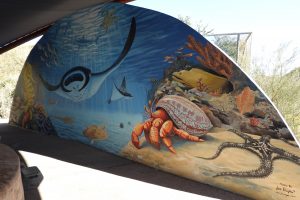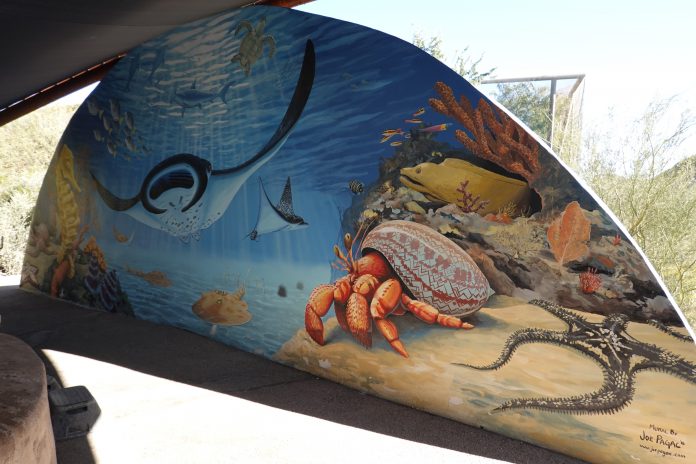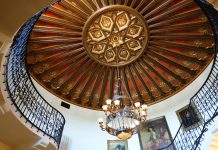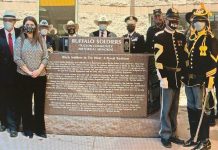The finest museum in the Tucson area is open for business. Located 14 miles west of downtown, the Arizona Sonora Desert Museum was founded in 1952 and now covers 98 acres.
Even though it has many fascinating exhibits, 85% of the museum is outdoors. Considering the Tucson weather, that makes it accessible nearly every day of the year. I will just provide here a sampling of some highlights and some little-known aspects of what you might see.
‘What you might see’ is in fact an important disclaimer, as the many animals on site do not act up and prance around for the sake of visitors. What your friend saw there last week might be quite different from what you will see. Even though it is billed as a museum, it is primarily a living museum, including trees and plants and birds and animals, some so small one can hardly see them at all.
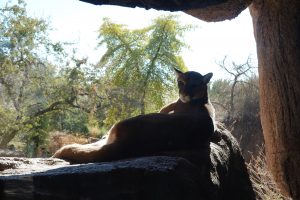
Let’s start at the top of the food chain. I was lucky enough to see Cruz the Puma (also known as a Mountain Lion and some 40 other names). He was brought here from California at age 5 months, and is now 8 years old. He kindly raised his head and looked right at me, before resuming his siesta pose in the rocky terrain he inhabits. Despite the “lion” name, he cannot roar and is more closely related by DNA with your house cat.
Speaking of house cats, I saw an ocelot too, with markings nearly identical to my own ocecat. Long thought to have vanished from Arizona, one was spotted in the wild in 2011. The ocelot has been on the endangered species list since 1982, and is one of 25 such animal and plant species in the museum’s living collection. The newest addition was in 2019, when an ocelot kitten dubbed Ida was born to the resident female ocelot Arieta. I did not see Ida, but Arieta was a beautiful sight. Javelinas were also much in evidence on my visit.
Even though this is the desert, aquatic life is very much in evidence. A large mural, dominated by a stingray, sits at one end of a pool which contains several cownose stingrays. By the way, there are close to 100 murals in Tucson, but this one is the most westerly of the lot. In normal times visitors can touch and feed the rays but until the virus restrictions are lifted one can just view them swimming endlessly in the large pool.
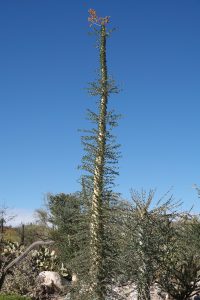
Anyone who lives in the desert Southwest will be familiar with most of the trees and plants that can be viewed on a walk along the trail. One not indigenous to Arizona, though, is the Boojum (pictured here). Promoted as the “most bizarre planet of the Sonoran desert”, they grow as high as 81 feet. Neither cactus nor tree, it is classified as a stem succulent. With a lifespan of up to 700 years, they are truly Time Lords amongst us. Their classic shape is like an upside-down carrot, but many develop arms that curl in wild patterns. Their natural habitat is Baja California; several boojums are close together here, with the tallest one in my photo.
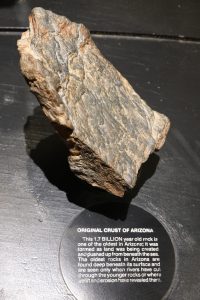
A highlight for me was the Earth Sciences Center, which includes a moon rock brought back to Earth by Apollo 17. A series of displays shows the evolution of Earth, and each includes actual specimens such as an example of the oldest rock in Arizona (1.7 billion years), and another rock dated to 1.3 billion that contains the earliest known single cell life. The museum itself sits in an ancient area that once was awash in water. Ripple marks evident on a rock found nearby is evidence of tidal action 525 million years ago. The last sea retreated from Arizona 120 million years ago. Also on display here are dazzling minerals of many different colours.
There are many other delights at the museum, including two aviaries (one for hummingbirds only), and a walk underground to see tiny animals that live beneath the surface. Depending on your interests one can spend anywhere from 2 to 5 hours visiting the museum and its two giftshops.
Details of the history of the museum can be found here: www.desertmuseum.org/about/
The Arizona-Sonora Desert Museum is located on the west side of Tucson, adjacent to Old Tucson, Saguaro National Park West, and Tucson Mountain Park. Address is 2021 North Kinney Road.
Summer hours, which begin in March, are 730am to 5 pm daily.
General Admission (ages 13-64): $24.95
Senior (ages 65+): $22.95
Youth (ages 3-12): $12.95
